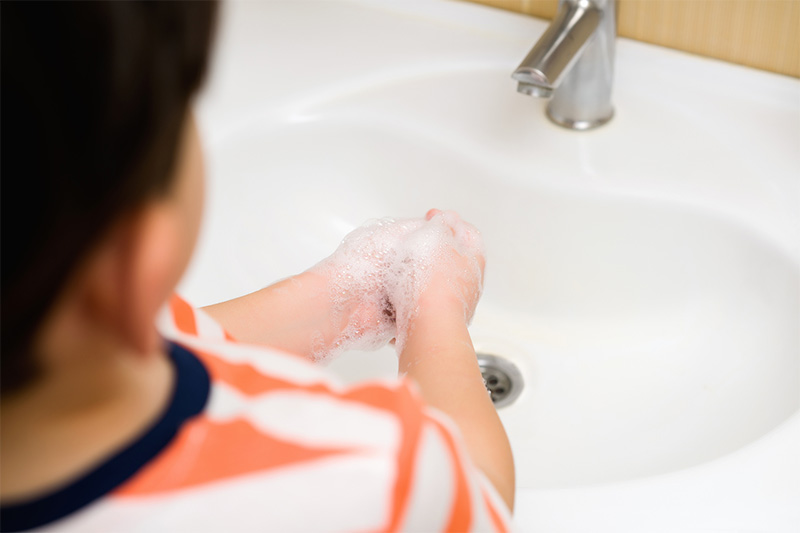Families For Life | Obsessive Behaviour, Routines and Rituals: Autism Spectrum Disorder

Many children and teenagers with autism spectrum disorder (ASD) like routines and things being the same. They also have obsessions, special interests or rituals they feel they need to follow. This behaviour often helps them cope with their surroundings.
Obsessions, rituals, routines and autism spectrum disorder
Many children and teenagers with autism spectrum disorder (ASD) have obsessions, routines or rituals. Some children have all of these things, and others have only one or two.
Obsessions
All children have favourite toys, activities and topics of conversation, but for children and teenagers with ASD, these interests are often more intense and focused than for typically developing children.
Younger children might collect things like stamps or balls or want to know the birthday of everyone they meet. They might open and close doors over and over again, or rush into each new place to find and flush the toilet. Older children might have very narrow interests or preoccupations, like needing to know everything possible about trains.
Some children move from one interest or obsession to another, and the interests last for weeks or months before they change. Others develop an interest – for example, in trains – in early childhood and continue this interest through adolescence and into adulthood.
Rituals
Some children with ASD have rituals. For example, your child might keep a favourite object in a specific place, like the bottom corner of a drawer in the bedroom. She might have to get it out and touch it before bed. Or she might drink only from a particular cup, or ask the same questions and always need a specific answer.
Routines
Routines are often important to children with ASD. They might like to eat, sleep or leave the house in the same way every time. For example, a child might go to bed happily if you follow his regular bedtime routine, but won’t settle if the routine is broken. Another child might get very upset if his route to preschool is changed, or might insist he puts his clothes on in the same order each morning.
How obsessions, routines and rituals help children and teenagers with autism spectrum disorder
We don’t know what causes obsessive behaviour or the need for routines and rituals. The cause might not be the same for everyone.
For young children with ASD who have limited play skills, special interests can be just something they enjoy.
For many children with ASD, obsessions, routines and rituals can also be a response to stress and anxiety. Their communication difficulties can make it hard for them to understand what’s happening around them, and this is stressful for them. But their obsessions and rituals let them feel more in control of their environment.
Also, children with ASD typically have sensory sensitivities. This can lead to them developing obsessions and rituals. For example, a child might stroke someone’s hair whenever she can because she enjoys the feeling or it helps her feel calm.
And children with ASD often have trouble with planning, so having a rigid routine helps comfort them.
You can use your child’s obsessions and special interests as rewards and motivators to teach your child new skills and behaviour.
Handling obsessions, routines and rituals
Some children with ASD – and their families – can live with daily obsessive behaviour, routines and rituals. Others might want to find ways to handle the habits in a different way.
If you’re thinking about doing things differently, it can help to ask some questions about the habit and how it affects your child and family. For example:
Is your child’s behaviour affecting his ability to learn?
Is your child’s behaviour affecting her social life?
Is your child’s behaviour affecting your family’s ability to carry out day-to-day activities, or to go on holidays or trips?
How would you feel if this behaviour is the same in a few years?
Is your child’s behaviour causing harm to himself or others?
Your answers to these questions might help you decide whether it’s worth trying to change things. And if you decide you do want to work on the obsessions and routines, your answers might guide you in what to focus on.
Before you develop a plan to manage your child’s obsessions, rituals and routines, it’s a good idea to think about your child’s developmental level and communication skills. For example, does your child have the communication skills to understand your instructions?
Working out what’s causing your child’s behaviour might also guide your next steps. Is it sensory? Or does your child feel anxious when faced with the unknown? You might be able to manage the sensory issues or the anxiety, which could lead to a decrease in the behaviour.
If your child’s behaviour isn’t affecting her life or other people in a negative way, but you still want to decrease it, you could consider setting some limits on the behaviour. For example, you could allow your child to talk about her special interest subject for half an hour after school. After that, she needs to switch to a new activity.
You might also be able to find a positive outlet for an obsessive interest. For example, if your child has an interest in dinosaurs, he might like to fill a scrapbook.
Children with ASD can get upset when they can’t do their obsessive behaviour or follow their routines or rituals. For strategies to help you manage this issue, read our articles on making changes to routines and managing difficult behaviour.
Getting professional help with obsessions, routines and rituals
An experienced professional can help you understand and manage your child’s obsessive behaviour, routines or rituals.
A good first step is talking with your child’s paediatrician or psychologist.
© raisingchildren.net.au, translated and adapted with permission
Explore more